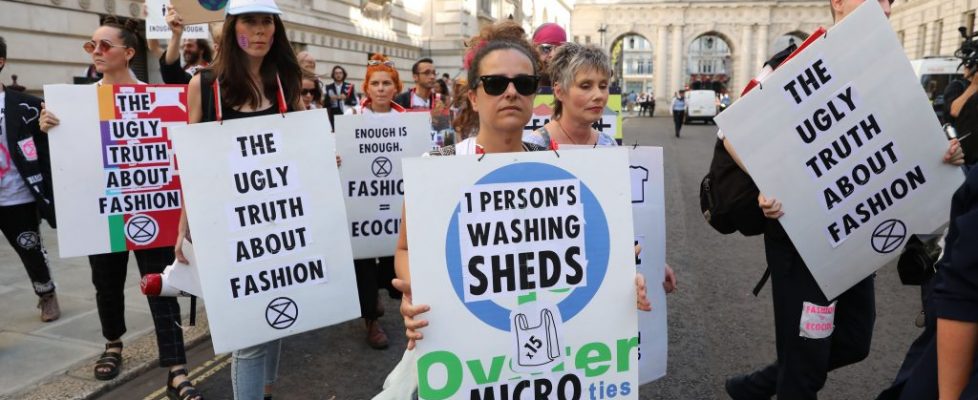An insight to the industry’s impact on the planet.
The fashion industry is one of the world’s most influential , versatile and impactful industries. Behind the look books and runways we find the business side of the industry. The rapid expansion of the industry stems from the four well built pillars recognised within the community. One of the pillars are regarding the environmental impact the fashion industry has had on the planet. Today the linear clothing system has had damaging effects on both society and the environment , this is the idea that the production, consumption and disposal of goods affect the environment. Mass production in factories leads to a large volume of greenhouse gases being released into the atmosphere. With 120 billion garments being produced per year it is showcased in the annual 1.2 billion tonnes of co2 produced from the textiles manufacturing. Rimarcikova, K.The usage of the clothing will result in using appliances such as washing machines which will be drained into rivers causing chemical pollution. Followed by the disposal of the goods of which are often thrown away,burnt or sent to third world countries resulting in the build up of landfill. Global fibre demands also have environmental impacts ranging from issues regarding animal welfare as well as factors such as deforestation , chemical heavy cellulose fibres and unethical methods using child labour and inhumane worker conditions. Fast fashion has meant that global fibre demands have had a rapid increase attempting to keep up with current trends , statistics show that for the production of 1 shirt 2700 litres of water is required , Rimarcikova, K. , implying that water wastage will be a high figure when conducting mass manufacturing. However with the aid of the media the industry is realising the impacts of this and so have introduced visions such as the circular economy, the idea that garments can have a prolonged lifestyle through the recycling and reconstruction. Further pushing the idea of sustainability in fashion , this is already being demonstrated in fashion through designers such as Patrick mcdowell. Mcdowell’s ‘Mcdowell, P. (2023). business utilises a sense of hospice in their relationship with customers , the ‘after care’ that they provide is a usage of reusing previous goods that the customer has purchased and when the customer no longer finds usage in the goods Mcdowell allows the customer to come in and have the goods constructed into a range of items that they wish to have it altered to. For example a leather jacket size downed into a cushion or a dress size downed to a scarf or smaller dress for children. ‘SDGs’ are sustainable development goals , envisioned to be solutions to world problems. Amongst the 17 SDGs there are a few that link to fashion. Goal 8 discusses ‘ Decent work and economic growth’ when associated with the fashion industry. This goal can link to the idea of investigating production techniques and how to improve the ethics and morals behind the production while maintaining a similar profit margin. Ultimately arguing that we can perform a move from the usage of pre industrial production techniques such as child labour/unpaid labour to a technique that fits the more industrial era utilising machinery.
References
Mcdowell, P. (2023). Planet guest talk.
UN (2018). Final call to save the world from ‘climate catastrophe’. Theguardian.com. The guardian .
Rimarcikova, K. (2023). Planet earth and fashion.
